The Original Grumman Ranger Widgeon
Article and Photographs by Burke Mees
Published 8 Jun 2020
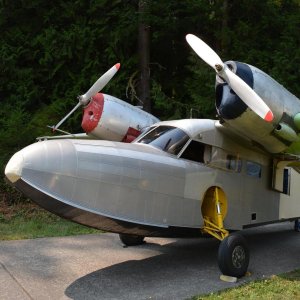
Ranger Widgeon (Burke Mees) |
It was 1941, just before the beginning of World War II when Grumman introduced the Widgeon. It was a scaled-down version of the Goose, which had been around for four years by then. Like many airplanes from that era, the Widgeon seemed to have been a hurried effort and my impression is that they put their first draft directly into production without taking the time to smooth out the rough edges. The Widgeon has some character issues that are not entirely appropriate for a certified airplane, such as its porpoising tendency on the water, but it also has the typical Grumman strengths such as solid construction and otherwise good flying characteristics.
Like most pilots who learned to fly in an all-metal Cessna, my first encounters with the Widgeon had to do with the modified versions that are significantly different from the original 1941 design. I had always wondered what it would have been like to fly the original but by the time I arrived on the scene the Ranger Widgeon was a nearly extinct creature that mostly existed in the fossil record of old black and white photos. Like the era in aviation that produced it, I figured the original Widgeon was something that was forever beyond the realm of first-hand experience. But then my phone rang with news that there were credible sightings of a genuine Ranger Widgeon in the Jurassic rain forests of the Pacific Northwest. I cleared my schedule and made arrangements to travel to Bellingham Washington to see it for myself. When I got there, I spent about ten hours doing some shakedown and training flights, which brought me back to an earlier epoch aviation history and gave me some new insights about an old airplane. |
The Ranger Engine
To introduce the original Widgeon I should describe the 200 horsepower Ranger engine that distinguishes it from the later versions. The Continental and Lycoming engines that you see on today’s Widgeons didn’t exist when the plane first appeared in 1941. The best that was available at the time was the Ranger 6-440C-5, which is a six-cylinder, 440 in³, inverted inline engine. This inverted inline configuration was almost uniquely a product of the 1930s and this one had been developed by the Fairchild Aircraft Company to power some of its single-engine designs, such as the PT-19/26 and Model 24.
The 1930s was a time of great experimentation in aviation accompanied by a process of evolutionary natural selection; the best ideas from that era became the standards that are still with us today, while other ideas didn’t make the cut and withered on the vine. The inverted inline engine was an idea that didn’t last, but it was popular at the time since it addressed some of the issues of the day; by situating the cylinders below the crankshaft, the inverted design provided good propeller ground clearance for the Fairchild airplanes with minimum obstruction to the pilot’s visibility over the nose. In the case of the Widgeon, the inverted engines provide good prop clearance above the water while keeping the mass of the engine from being top heavy. The advantage of the inline configuration was to minimize cowling drag with a narrow frontal area, which was a big design issue at the time. With later advances in low-drag cowlings, the issue of frontal area became less important, but in the thirties great efforts were being made to keep the cowlings narrow.
The disadvantages of the inverted inline configuration have to do with lubrication and cooling. Placing the crankshaft at the top of the engine requires the oil system to work against gravity, and lining up air-cooled cylinders in a row tends to make the rear cylinders run warm. Harley riders who sit on top of a V-twin understand this, and the Ranger has three times as many cylinders, each situated progressively behind the last.
These pros and cons of the inverted inline engine seemed like a good compromise at the time, and the Ranger was part of a fad that included the de Havilland Gipsy series, the Napier Javelin and the Menasco Pirate to name just a few. That was back in the days when they knew how name engines. Ultimately however, the horizontally opposed configuration proved to be a better way to combine high thrust lines and low frontal areas with better lubrication and cooling. The appearance of good horizontally-opposed engines brought an end to the inverted inline design.
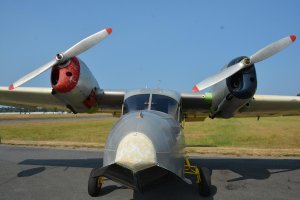 |
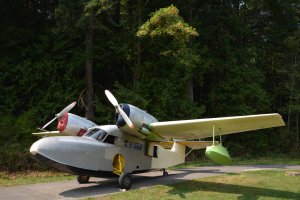 |
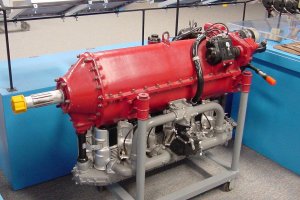 |
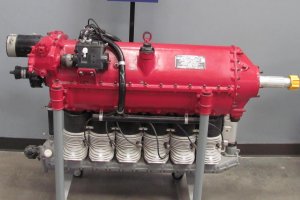 |
| Grumman Ranger Widgeon |
Ranger 6-440, Intake Side |
Ranger 6-440, Exhaust Side |
Flying the Rangers
Ranger engines are antiques, but I thoroughly enjoyed flying them. They tick along like the proverbial sewing machine and with such a smooth baseline, you can easily tell when something is amiss, such as carburetor ice, fouled plugs, or an overheated magneto, which is apparently an issue particular to this design. I experienced all these, and in a less refined engine these minor aberrations might stay hidden in the background noise.
Some of the standard radial engine etiquette also applies to the Ranger engines. For example the hydraulic lock that can occur in the bottom cylinders of a radial is a potential issue for all six cylinders in the Ranger since they’re all bottom cylinders. Prior to starting the Rangers, you have to pull each prop through six compression strokes to clear the cylinders, which requires a hooked stick to reach the propeller blades on the high-mounted engines. After starting the engines, you have to warm up the straight 50-weight oil to 38°C before taxiing, and in flight you should make gentle power changes and pay careful attention to heat management on the cylinders.
No description of a powerplant is complete without also describing the propeller that goes with it, and in the case of the original Widgeon, this was a fixed-pitch, non-feathering prop made of wood. To describe what was considered acceptable in the 1940s, the Widgeon manual points out that the wood props are affected by moisture and temperature, and if you don’t fly the Widgeon regularly, it is not unusual for the wood props to warp slightly, changing the pitch and altering the ‘speed characteristics’ of the two engines. The manual suggests that this is not a big deal, it goes on to say that ‘several hours of running may bring the propellers back to their former speed.’ This wasn’t an issue for me because the airplane I flew had the slightly more modern fixed-pitch Curtis Reed metal props.
I had never flown fixed-pitch props on a twin and found it a different way to do things. To set cruise power I initially set a manifold pressure per the recommended book setting, then confirm the resulting propeller rpm is in an acceptable range, and finally make a slight throttle adjustment to sync both engines by sound.
The antediluvian concept of non-feathering propellers brings us to the topic of single-engine flight, which is not one of the Ranger Widgeon’s strong points. Even under the best of circumstances I wouldn’t count on a working Ranger engine to overcome the drag of a windmilling Ranger in a way that would reliably hold altitude. This puts the Ranger Widgeon in the general category of drift-down airplanes, where an engine failure results in an irrevocably earthbound trajectory, albeit one with a favorably extended glide. Obviously you fly an airplane according to its capabilities and I found myself cruising at higher altitudes to stretch my glide radius over areas of inhospitable terrain. That is something you don’t have to think about in a modern Widgeon.
What exactly are the emergency procedures in the event of an engine failure in the Ranger Widgeon? The 1941 manual directs you to fully open both throttles, which supplies max power to the operating engine, and also provides maximum airflow through the failed engine to minimize windmilling drag. From there you just maintain 90 mph and make the best of the situation.
I suppose the simplicity of this arrangement eliminates some of the opportunities for mistakes you can make in more capable light twins. When an engine quits in a Ranger Widgeon, there’s no need to correctly identify the failed engine, decide whether or not to shut it down, avoid feathering the wrong propeller, or make the best decision among various options of continuing to fly or landing on surfaces of various suitability. Instead you just shove both throttles to the stops and focus on making it to the best available landing area. The Ranger Widgeon doesn’t have the multiengine redundancy that can make light twins safe, but neither does it have the procedural complexity that can make them dangerous.
The Post-War Era
The original Ranger Widgeon had done the serious work of patrolling the American coast armed with 325 pound depth charges, but it was a light-duty airplane with modest capabilities and it had the mechanical reliability typical of 1930s technology. But that was a long time ago, and things have changed since then. The advances in technology that came during the 1940s brought us into a new era, and the Widgeon also changed to keep up with the times.
By the time the War was over the Ranger engine was obsolete and it wasn’t long before a whole assortment of more powerful and reliable engines found their way onto the Widgeon airframe. These included the Continental O-470, IO-520, the Lycoming GO-435, GO-480, and counter-rotating TIO-540s, all of which came with full-feathering constant speed propellers. (There’s also the Lycoming R-680, but I’ve never been able to take that conversion seriously.) Single-engine performance was much improved, and the airframes underwent structural modifications to increase the gross weight.
Compared to the original Ranger airplane, the modified Widgeons saw a 30-50% increase in horsepower, and depending on the particular conversion up to a 22% increase in gross weight, which transformed it into a very robust and capable airplane. The post-war ‘Super’ Widgeon found a place as a commercial airplane in coastal areas, but as the operating costs increased with age, most of them gravitated towards private ownership. Now that we’re in the 21st century, the Widgeon’s free-castering tailwheel and porpoising tendencies relegate it to the fringes of mainstream aviation, where it has a small but loyal cult following.
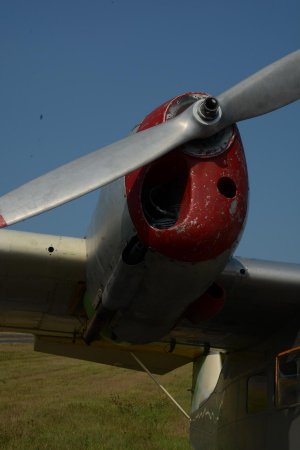 |
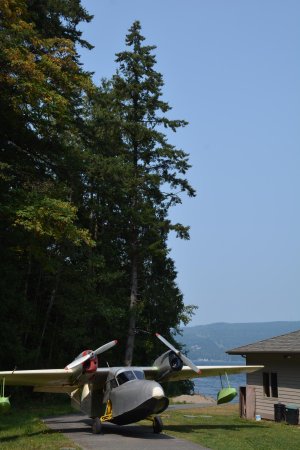 |
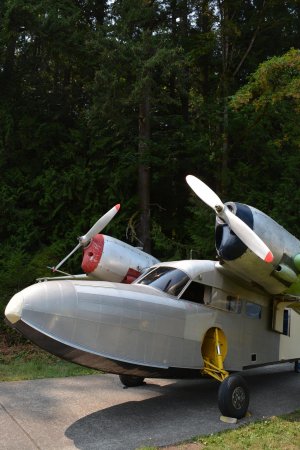 |
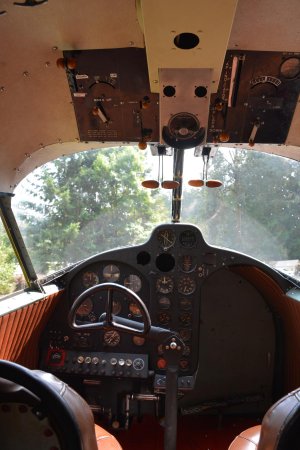 |
| Grumman Ranger Widgeon |
The Front Office |
The Old and the New
Retrofitting old airplanes with large engines is a familiar theme in Alaska, and while these conversions improve an airplane’s capabilities, they can also affect its handling. An airframe is engineered for a certain weight and horsepower, and changing those important parameters can disrupt the airplane’s natural balance, especially in a seaplane where the hull was designed to ride in the water at a certain level determined by the airplane’s weight.
While the modern Widgeon handles like an Italian sports car in the air, it does have some handling issues on the water and I had always wondered if some of its bad behavior was a result of the conversion. Now that I’ve flown the original, my answer is, not really. The Ranger Widgeon has the same twitchy hull as the rest of them and the instability seems to be inherent to the design. I did however find the Ranger Widgeon easier to fly in ways that I can explain in terms of weight and power.
The Ranger Widgeon was a featherweight, no-frills, fabric-wing airplane with a max gross weight of 4,500 lb. The modern Widgeons are generally heavier both empty and loaded. The modifications associated with the conversion increase the empty weight, and the max gross weight can be as high as 5,500 lb. As a flying boat gets heavier, its hull rides lower in the water and it becomes more sensitive to porpoising. Loaded for a typical training flight, the Ranger Widgeon exhibited the more friendly behavior that I associate with lightly-loaded Widgeons.
Power does not directly affect porpoising, but it does affect the rate at which things happen. To avoid porpoising on takeoff, you have to make a series of properly timed elevator inputs at very specific rates, and rapid acceleration in the high-horsepower modern Widgeons leaves little room for error in your timing. The low-horsepower Ranger engines move things along in slow motion, which makes it easier to recognize and react to the various cues involved in properly managing the pitch. The slower acceleration of the Ranger Widgeon makes it easier to keep up with this critical progression of elevator inputs.
Does that mean that less power is better? Not at all; the overabundance of power in the super Widgeon can be very useful. For example, while maneuvering on the step in the Ranger Widgeon I saw a large boat wake ahead, which could easily have been avoided in a Super Widgeon by just nudging the throttles forward and levitating into the air. Calling for full speed ahead in the Ranger Widgeon produced unimpressive acceleration and only resulted in slamming into the wake at a higher speed. Using raw power to escape awkward situations doesn’t work in the sluggish Ranger Widgeon, where you have to solve your problems with finesse and good reflexes.
If you find that the slow pace of the Ranger-powered takeoff makes the airplane easier to control, there’s no reason you can’t slow a Super Widgeon down in a similar manner by making a slow and easy application of power on takeoff. In fact I usually do this in training to help develop a student’s ability to recognize and respond to the relevant cues. It turns out that the gradual application of power I use at the beginning of a Widgeon checkout roughly matches what you get with a prompt application of full power in a Ranger airplane.
Are these variations in flying characteristics a big deal? Not really. I’d say they fall into the category of the minor details, and besides, every Widgeon handles a little differently from the next anyway. In the end, I found the Ranger Widgeon to be an immensely likable airplane. I also found it to be an exotic relic from an earlier era. It has modest capabilities, but it also has a special charm.
If I could choose my favorite version of the Widgeon, which would it be? That depends on what I’m doing with it. If it’s a matter of a summertime outing to a recreational lake where everyone is wearing shorts, then I’d prefer the amiable Ranger airplane with its friendly nature. If it’s a matter of flying a heavy load to a remote lake in coastal Alaska on a rainy day, then I’d prefer the solid capabilities of an airplane with the throaty growl of GO-480s. If I’m the one paying the bills, and I want the best compromise between capabilities and simplicity, then I’d probably prefer the O-470 version. Of course in the absence of a more specific mission, I’d take whichever one happens to be available, and I’d fly it according to it’s particular set of capabilities and limitations. The Widgeon is a special airplane, and flying the Ranger version just made me appreciate it more.








